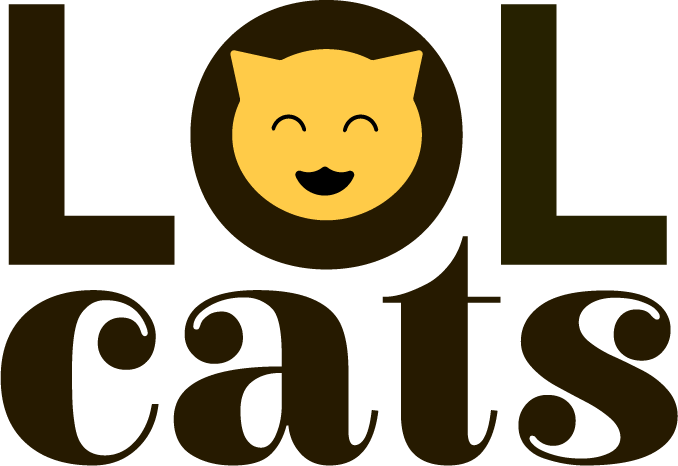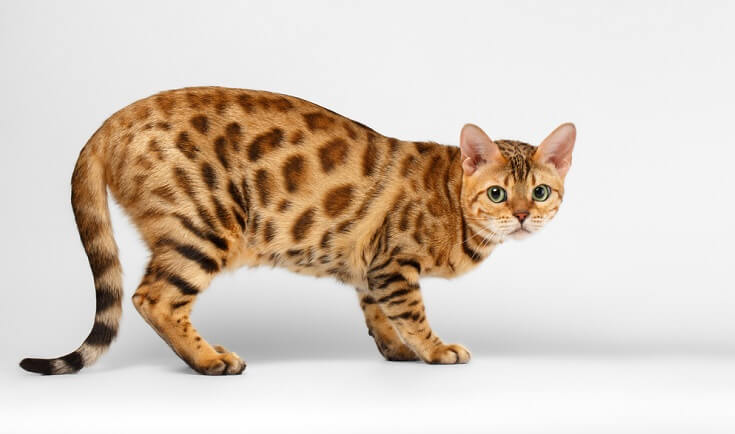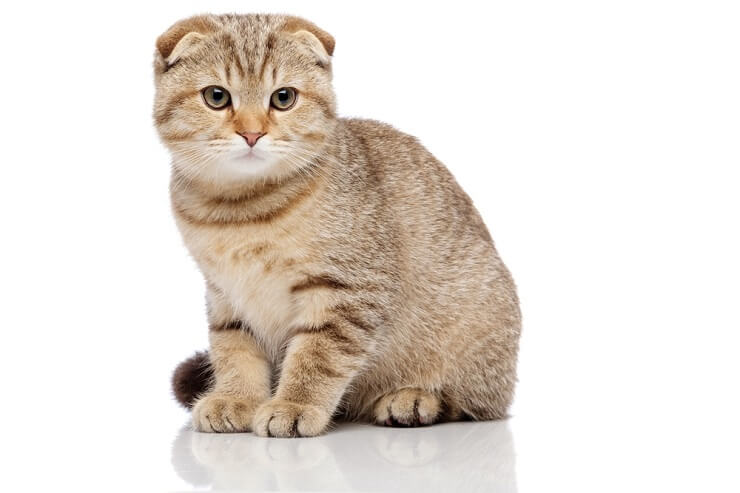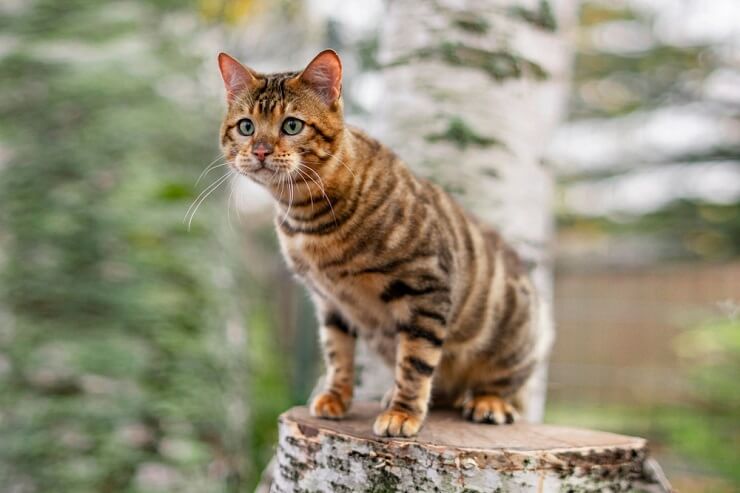12 Adorable Orange Cat Breeds (With Pictures)
This page contains affiliate links. We may earn money or products from the companies mentioned in this post through our independently chosen links, which earn us a commission.
Orange cats are not a breed, but a coat color or variation of a breed of cat. However, not all breeds create orange cats, but is more likely to be found in certain breeds of cats. Orange is most commonly found in the Munchkin, British Shorthair, Bengal, Maine Coon, Persian, Abyssinian, and Egyptian Mau breeds.
In this article we have compiled a list of 12 orange cat breeds and some fascinating facts about them.
1. Turkish Angora
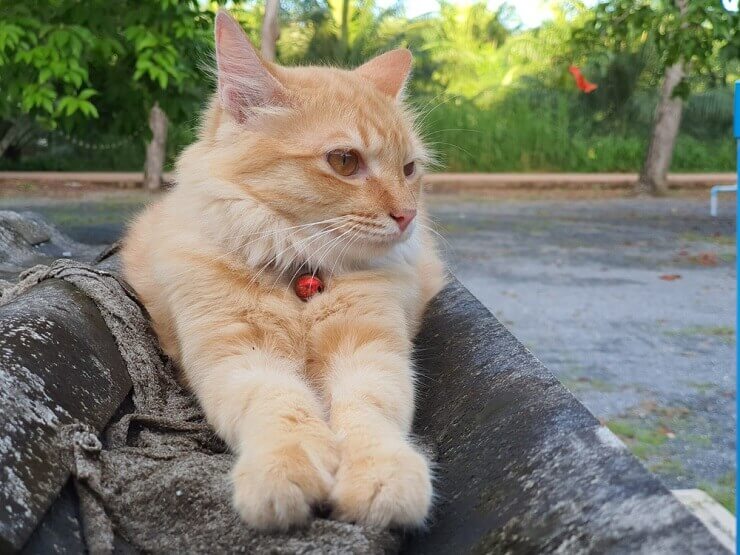
This breed is believed to be originally brought to the United States in the 1950s by American servicemen. The Turkish Angora is a natural breed that originated in the Ankara region near central Turkey and there they are considered a national treasure. It is estimated that this breed was introduced to Europe by the Vikings, probably during the 10th century. Though original Angoras were white with blue or green eyes, they are now found in many colors including an orange tabby.
The Turkish Angora is highly intelligent and is known for its problem-solving skills, as well as being easily trained. They can be taught basic commands, and actively respond to human emotions, making them an emotionally intelligent breed.
2. Devon Rex

The Devon Rex is an almost hairless cat breed, but the short hairs are curly, giving the cat a unique appearance. This breed is usually on the smaller side, and the Devon Rex is considered hypoallergenic.
The Devon Rex is great for families with kids, and this breed will also get along with cat-friendly dogs. These cats love to play games, such as fetch, and can be trained to do tricks. They are very active, intelligent cats with playful and outgoing personalities.
3. Bengal
Bengals have stunning coats that come in many striking patterns like rosettes, spots or even marbled, which is one or more colors swirl into his coat’s background color. They have large round paws, broadheads, muscularly built, and wild-looking spotted coats. Not only are they hypoallergenic, but they have a trait called “glistening” that gives their coat a shiny, glimmering finish.
This breed is naturally athletic and enjoys climbing and jumping, so you can be sure they will find an indoor adventure to get into. The Bengal is also a trainable and can even be taught to walk outside on a leash. Bengals are very alert and are social cats with a playful personality. They are known for mischievous habits like turning light switches on and off or opening cabinets when they are bored.
4. British Shorthair
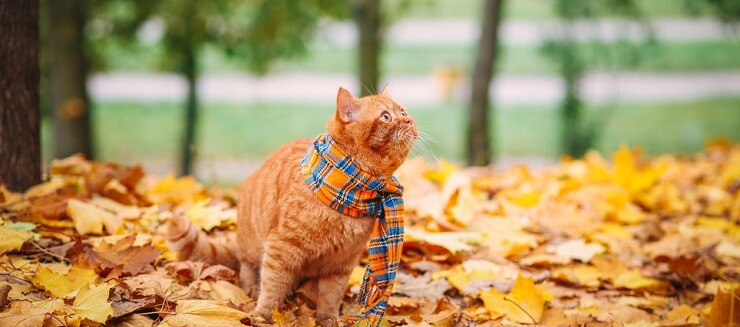
British Shorthairs are one of the oldest cat breeds in the world. The Romans are said to have imported these cats from Egypt, probably brought the first of them over with them when they invaded Britain and they soon settled in. Their coats are short, thick and plush ranging from blues to orange and eye color depends on the coat color which range from blue to copper.
This breed is often relaxed and easy-going and have a sweet temperament and affectionate nature. They generally like to remain inactive and don’t need much play or exercise to be content.
5. Abyssinian
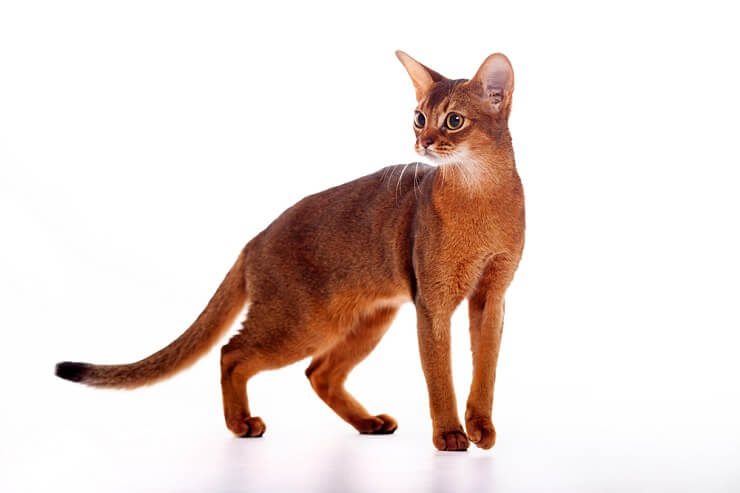
The Abyssinian is one of the oldest known cat breeds, dating back to ancient Egypt 4,000 years ago. Some say that the Abyssinian is a cat breed from ancient Egyptian times because it looks similar to artifacts from that time period. Of course, the modern Abyssinian is much different than its ancestors. These cats display a ticked tabby coat with individual hairs exhibiting different colors. The coat sports a ticked or agouti pattern highlighted by alternating bands of color on the hair shafts that give off a translucent quality.
This breed is very curious, and can use its paws to open cabinet doors and turn on light switches and it’s best for you to keep breakables out of paw’s reach. Loyal and affectionate, but demanding, the Abyssinian can become easily bored. They need interaction and home-alone toys as well as suitable exercise outlets like floor-to-ceiling scratching posts and wand toys to stalk.
6. Chausie
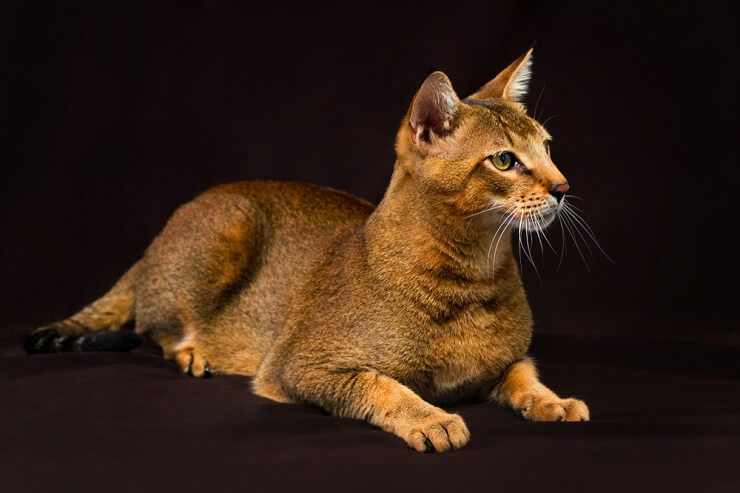
Chausie is believed to be the first hybrids of the jungle cat and the domestic cat, born in Egypt several thousand years ago. The jungle cat is native to a region spanning Southeast Asia, India, and the Middle East. It is also known that the ancient Egyptians kept domestic cats as pets. Their coats are typically a brownish-orange agouti, although some Chausies have a black or grizzled black coat.
The Chausie’s personality is active, intelligent, sociable, and they are best suited to experienced, ardent owners who can handle an energetic and headstrong feline.
7. Munchkin
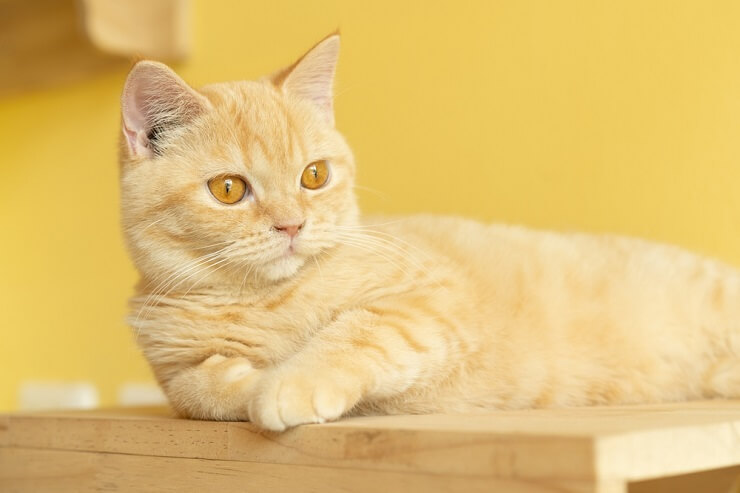
The Munchkin is a relatively modern breed, only becoming established during the 1980’s.Munchkin cats come in all color combinations, coat styles, and can be hairless, short haired, or long haired. Short-haired Munchkins have plush medium-density coats, while long-haired Munchkins have silky smooth fur. Popular coat shades and patterns of this breed are tabby, calico, gray, and solid black.
Munchkin’s are quick, fun-loving, energetic and affectionate little cats. What they lack in leg height they make up for with their unique look and affectionate temperament. They can often be seen sitting up on their back legs to look out a window or see over furniture. The Munchkin is highly intelligent and can be taught tricks and rewarded with treats.
8. Persian
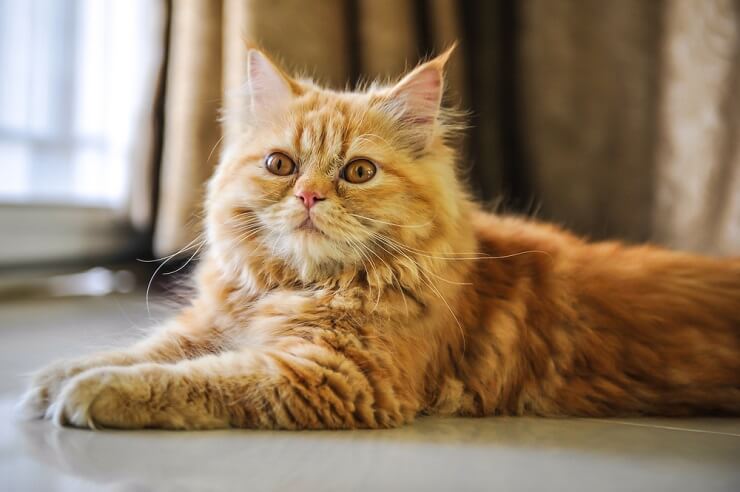
The Persian cat appeared in the West Circa 1620, but it wasn’t until the end of the 19th century that this breed became a household choice. The Persian is one of the most intelligent cats and known for the ability to be trained. Though white Persians are perhaps the most iconic, orange Persians are some of the most distinct-looking tabby cats around.
Persian cats are discriminative and only share attention with family and a few trusted friends. This gorgeous, flat faced cat breed does get along with children and other household pets. However, Persian’s are not a fan of loud environments and prefer quiet homes where little changes.
9. Turkish Van
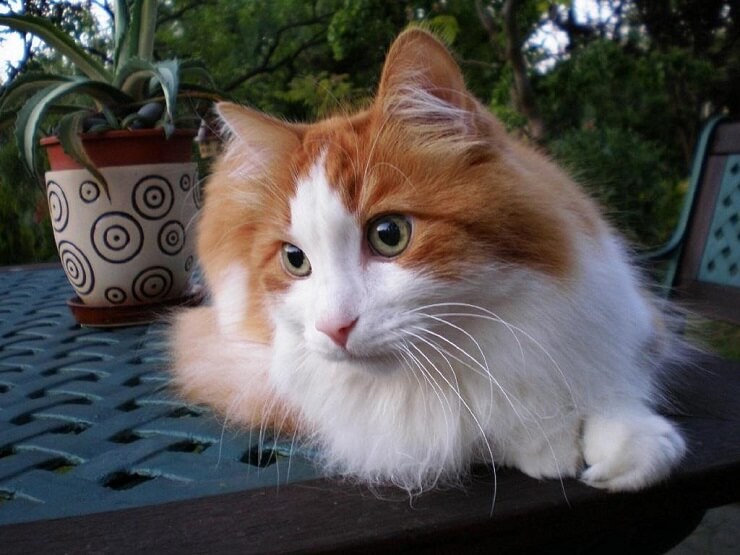
The first of this breed were brought to England in 1955 but identified simply as Turkish cats. The name was later changed to Turkish Van to avoid being confused with the Turkish Angora. The coat features an undercoat and gives off a cashmere-like texture that is water-resistant. Its eyes are large, expressive, set at a slant and can be blue or amber or odd-eyed. Its long, sturdy body is muscular and its head is wedge-shared with prominent cheekbones.
The Turkish Van loves water, so be careful to keep your bathroom door closed or your toilet may be full of toys. This breed is extremely affectionate, but prefers to rub against your leg and not be picked up. This breed possesses high levels of energy and prefers playtime over sitting in a lap. Even though they are athletic, they demand attention, and love to master tricks for people.
10. Scottish Fold
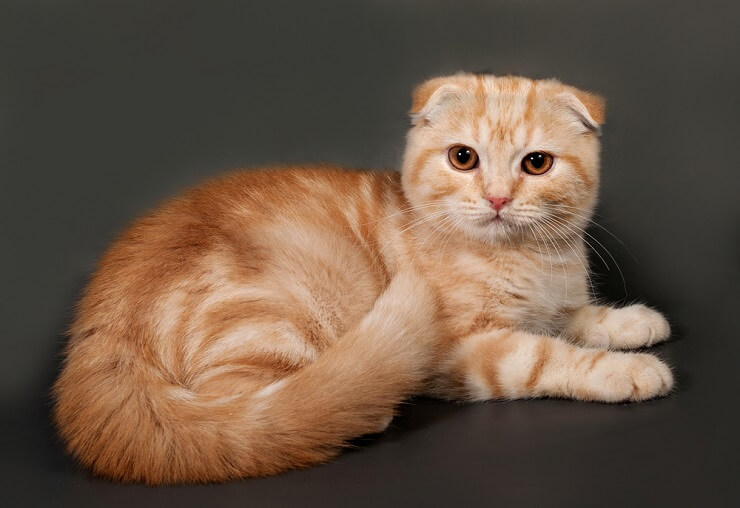
The Scottish Fold originated in Scotland in the 1960s. This breed has the smallest ears of any domestic cat breed in the world to date. Scottish Folds lack cartilage in their ears which causes them to flop and fold forward towards the front of the head.
The Scottish fold breed is a playful, sensitive, and expressive cat. These adorable cats are known for posing in strange positions, like sitting upright like a meerkat, lying flat on the floor, or on their backs with their paws in the air. They are moderately active and like cat toys that test their agility as well as challenge their intelligence, like puzzle toys. Scottish fold’s long for attention and make great companions.
11. Maine Coon

This large cat breed is one of the largest and most popular in the world and comes from the US state of Maine. The Maine coon is a cross of an Angola cat and the Shorthair American cat. Maine Coon’s are available in over 30 color variations which includes orange.
Maine Coons are a smart and loyal breed that enjoys human companionship. Known for their sweet disposition and calm outlook on life, they tend to follow their favorite human from room to room. This breed’s activity levels may range from couch potato to active, and the Maine Coon likes to be high up. They are known to also be fascinated by water.
12. Egyptian Mau
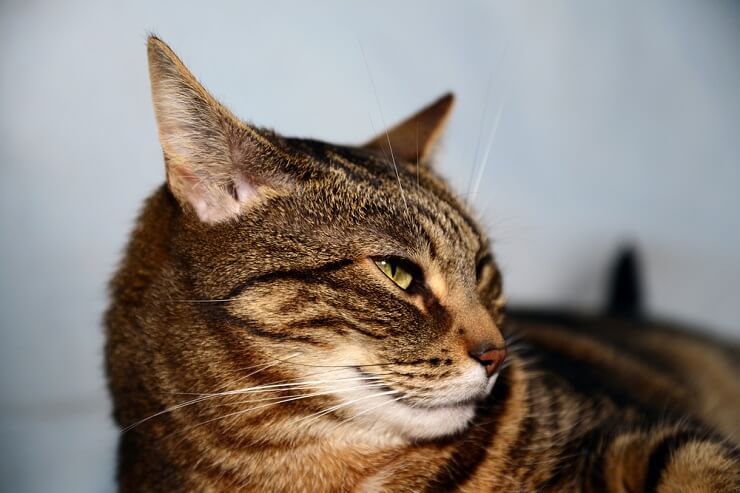
Archaeologists have discovered artwork depicting these cats and cats in the tombs of ancient Egyptians that look a lot like todays Egyptian Mau. The Mau may be related to a spotted subspecies of the African Wild Cat. Egyptian Maus have natural spots on the skin as well as the coat that comes in silver, bronze orange and gray colors. Maus take up to two years before reaching physical maturity.
Mau’s are very loyal and devoted to their favorite people. They often show their affection in dog-like ways like waiting at the door to greet their owner when they arrive home as well as bringing a toy for playtime. They often chirp or chortle to get attention or if they see something like a bird outside or an insect crawling across the floor.
How do Orange Cats get Their Color
The orange color is comprised of a light agouti (ticked) background and darker stripes, swirls or spots. The orange gene is located on the X chromosome, which makes it sex linked. As males (XY) only have one X chromosome, they will either be orange or non-orange, however, as the female (XX) has two chromosomes, she can will be orange if she inherits two copies of the orange gene, or caliby, calico or tortoiseshell if she inherits one copy of orange and one non-orange.
There Are More Orange Male Cats Than Females
As mentioned above, the gender of an orange cat is almost always male. Only about 1 in 5 ginger cats are female, so there is an 80% chance you will be getting a male if you are looking for an orange feline friend.
In addition, ginger male cats father tortoiseshell or ginger females. If both parents are ginger, then they will have all ginger kittens as well.
They are Marked with an “M”
All orange cats, are marked with an M on their forehead from the time they are born. While there are several theories about how this happens, no one really knows. One is that it stands for Mau, which is the Egyptian word for cat. Ancient Egyptians revered cats, which is what gives this story its charm.
Cats come in a variety of different colors, shapes and sizes each with their own distinguished personalities and traits. However, many cat breeds feature the orange color coat and special markings, but the breeds mentioned above are some of the most common.
